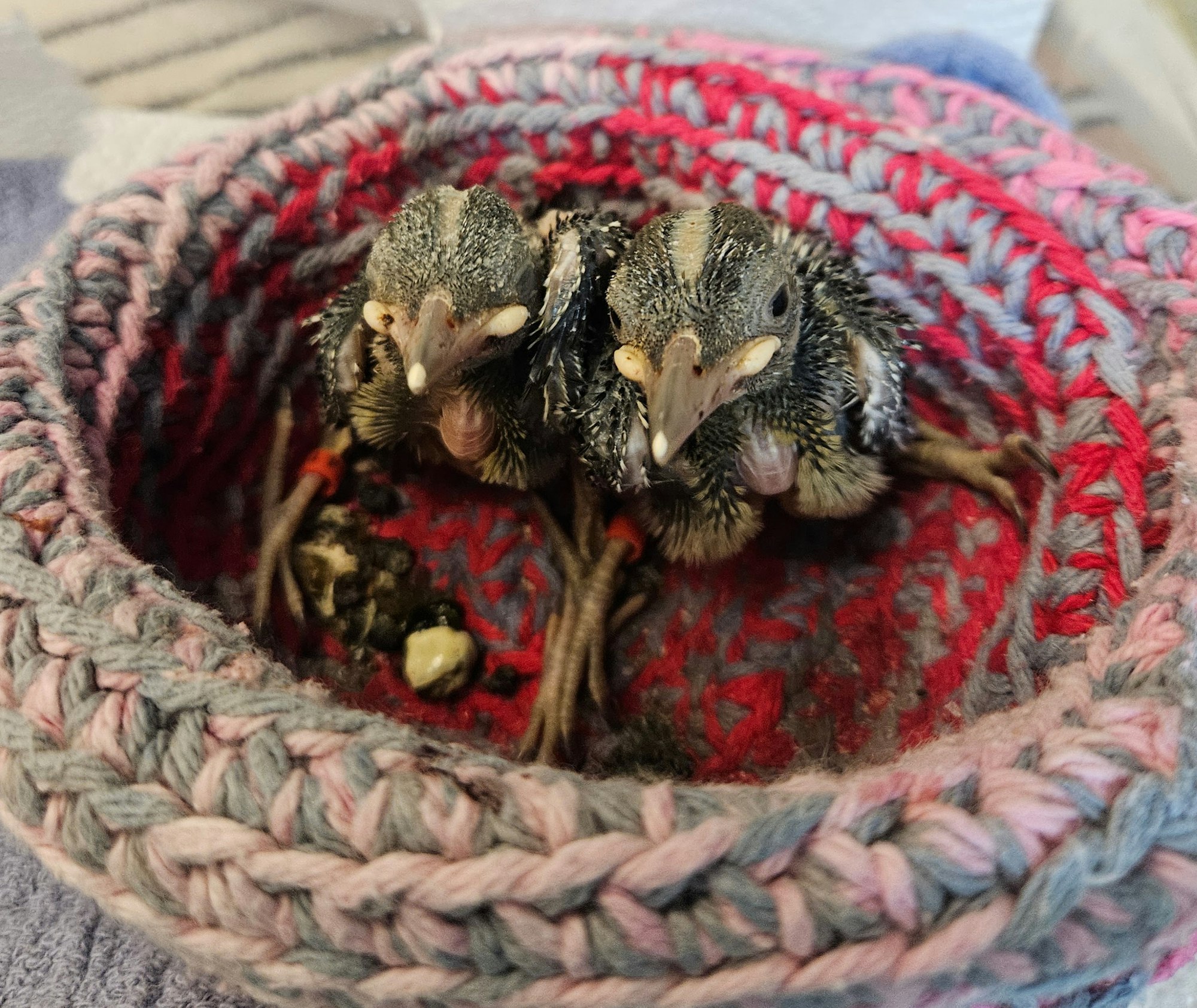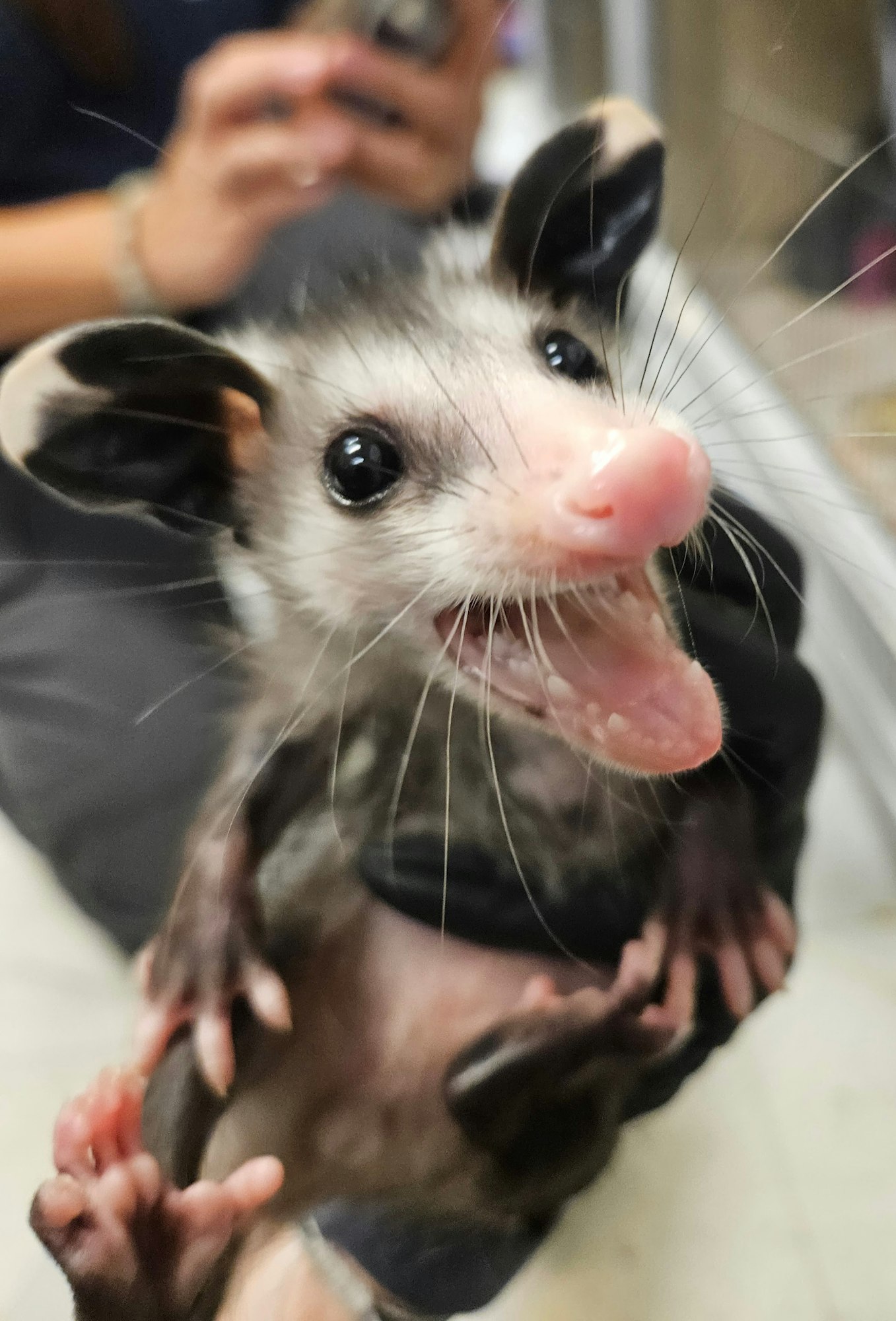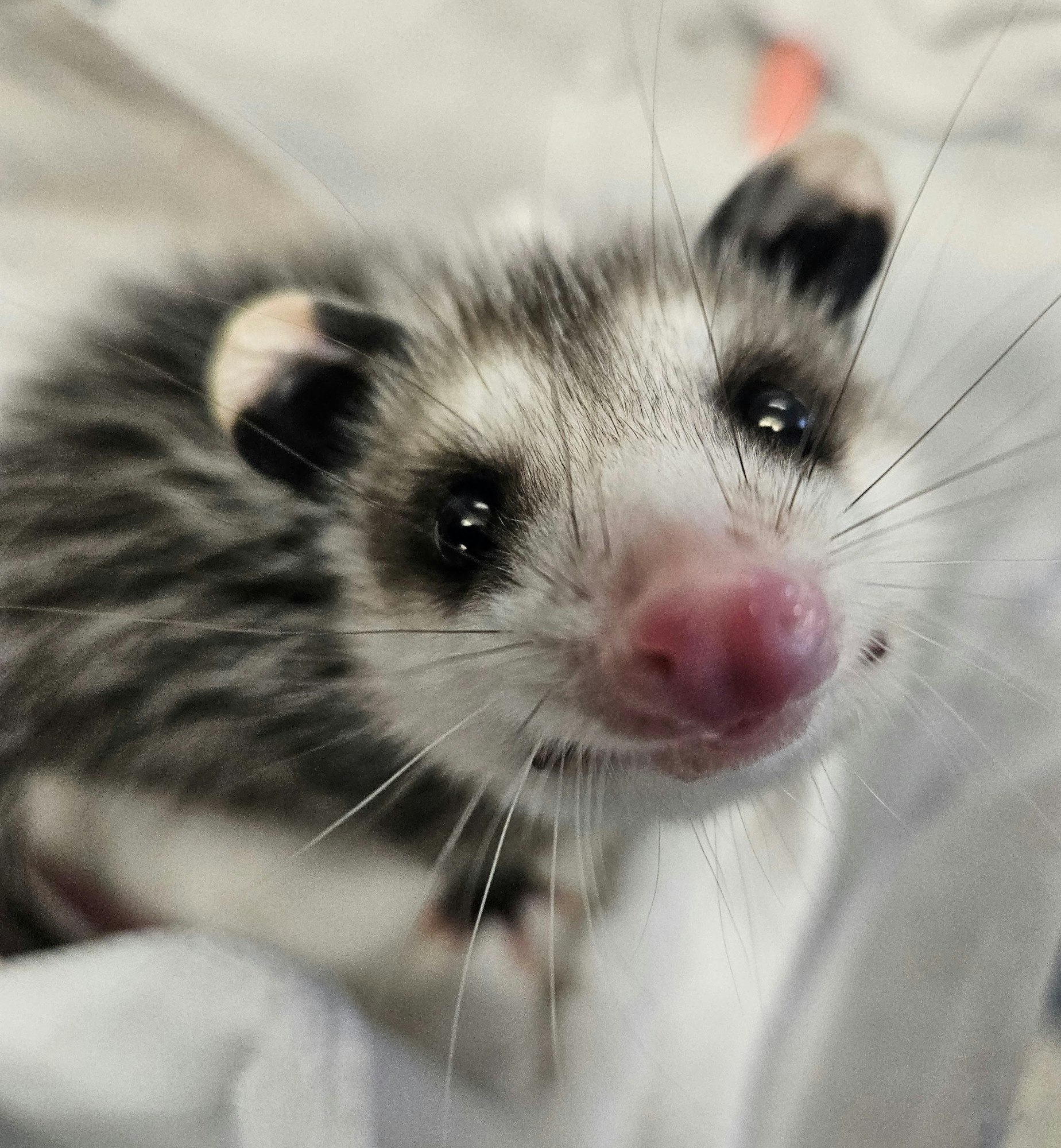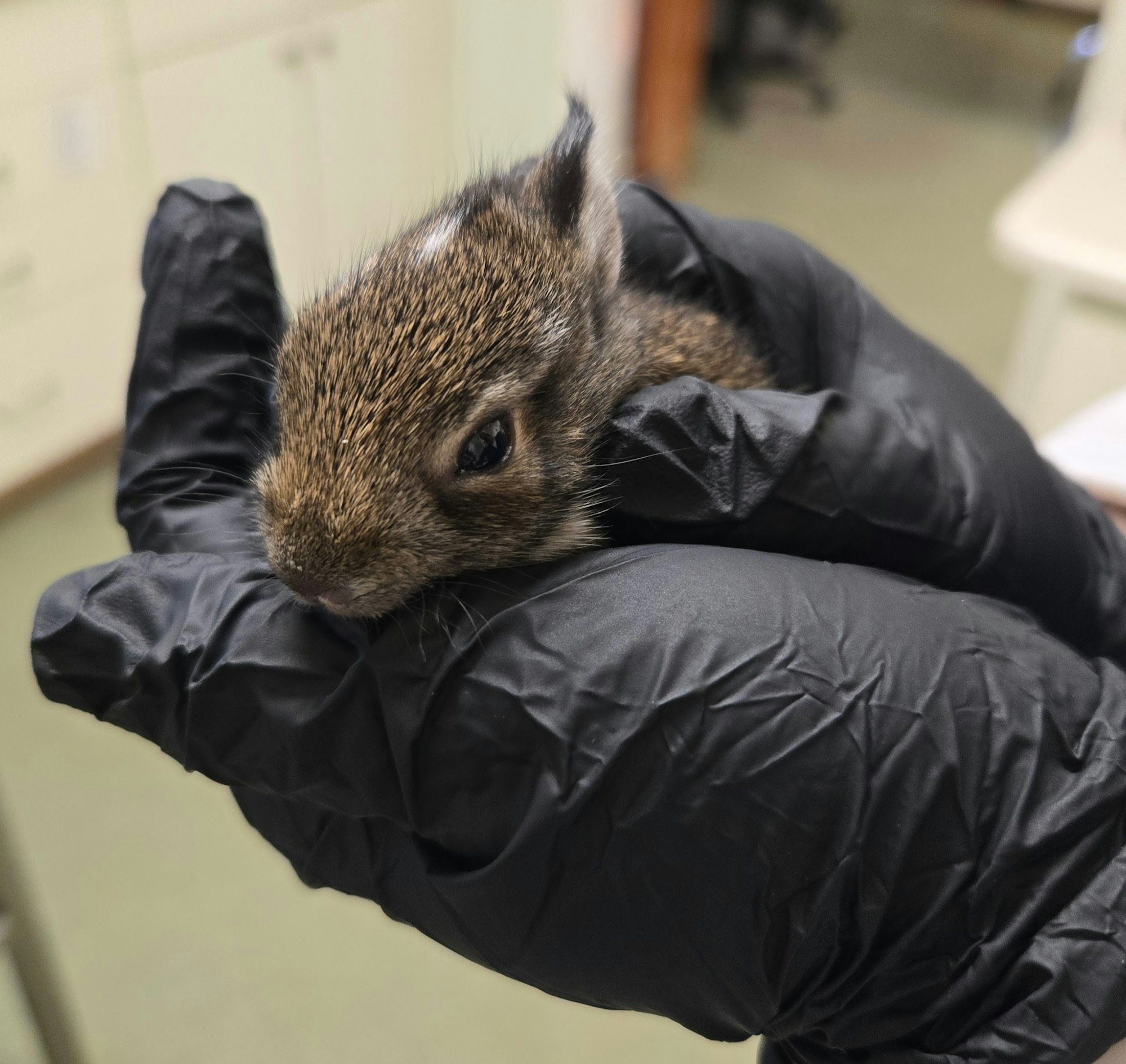It’s Baby Animal Season
When we encounter a baby wild animal, often our first instinct is to try to rescue it, especially if it’s alone. Before intervening, make sure it actually needs help. In many cases, it’s normal for wildlife babies to be alone. Generally, if you find a baby animal, it is best to leave it alone. Rarely are animals actually orphaned; the parent may be searching for food or observing its young from a distance. Do not pick up baby animals or remove them from their natural environment. “Rescuing” an animal that doesn’t need rescuing actually decreases its chance of survival. Though it might seem harsh, it’s normal and natural that not all wild animals survive to adulthood.
The exception is if an animal is injured as the direct result of human activity, such as getting hit by a car, attacked by a pet, striking a window, or falling from a nest during tree work, or if you’ve witnessed its parent killed or trapped and know for sure that it is an orphan. In those instances, the ethical thing to do is try to help. Calling a local wildlife rehabilitator should be your first step to providing help for the animal. Busch Wildlife Center is a good option in our area. South Florida Wildlife Center in Ft. Lauderdale is another good option, since they both have public sites available for drop-off seven days a week.
If you encounter wildlife you think may be injured or orphaned, you should note the location and contact a Licensed Wildlife Rehabilitator. If you cannot reach a Licensed Wildlife Rehabilitator, you can contact the South Florida FWC Regional Office for assistance.
Please note: All pictures in this article are of animals that were under the care of South Florida Wildlife Center. Do not attempt to rehabilitate any wild animal yourself!
Species Specific Tips:


Birds
Sometimes, you may encounter baby birds on the ground in spring and summer. If the baby bird is featherless or covered in fluffy down, it is called a “nestling” and should be returned to the nest if possible. Listen and look for the parents to see if you can find where their nest is located and where you can safely place the nestling. Touching a nestling will not make the parents reject it. Place the nestling in a box or basket (perfect use of old easter baskets) with some shredded paper or towel, and hang it in a nearby tree or bush. Birds can’t move their babies back to their old nest, so this will be the nestling’s new nest. The parents should come and take care of it from there. If you find a nest on the ground or if no parents are near the box placed in the tree or bush for about 24 hours, or the nestling looks weak or listless, take the nestling to a licensed wildlife rehabilitator for care.
If the baby bird is fully feathered, it’s called a “fledgling,” and it is normal to be out of the nest. Fledglings spend several days on the ground, hiding in the vegetation until they can fully fly. While this is a dangerous time for young birds, their parents continue to feed and protect them, and your intervention is unnecessary. However, if you see a fledgling in the street or otherwise in harm’s way, try to move it into dense vegetation close to where you discovered it so the parents can look after it.


Squirrels
Squirrel mothers can have several litters over the spring and summer. They give birth in a leafy nest built in tree branches or inside tree cavities. If you find a baby squirrel on the ground with closed eyes or can’t move, it’s too young to be away from the mother and could be injured, dehydrated or malnourished. Keep the baby warm by wrapping a towel around it and leaving it for 24 hours. You can even find and play YouTube videos of baby squirrel noises near it, and the mother can come and get it. If the baby is still there after 24 hours, contact a wildlife rehabilitator immediately. Do not try to feed or raise it yourself. Baby squirrels require special care and must be fed a specific formula every few hours around the clock.


Opossums
Not all opossums you come across will need rescuing, so it’s important to determine whether the baby opossum is genuinely orphaned or in distress. Look closely for any visible signs of injury, such as bleeding, limping, or difficulty moving. Injured opossums should be handled with care and brought to a licensed wildlife rehabilitator immediately.
Virginia opossums are marsupials, meaning young babies live in their mother’s pouch during their early life stages. They will begin to ride on their mother’s back as they grow. If you see a baby opossum that has fallen off its mother, it may have been accidentally left behind or is old enough to manage on its own.
Check the size of the opossum. The size of the baby opossum is a key factor in determining whether it needs help or is old enough to survive on its own. A quick way to determine whether the baby opossum needs assistance is by measuring its body length (excluding the tail). The size of the opossum helps wildlife experts decide if the opossum is still dependent on its mother or if it is mature enough to fend for itself.
- Under 7 inches (not including the tail): If the opossum’s body is less than 7 inches long, it is too young to survive independently. In this case, the baby opossum must be transported to your nearest wildlife rehabilitation center. These young opossums still depend on their mother for care and food, and without intervention, they are unlikely to survive in the wild.
- Over 7 inches (not including the tail): If the opossum’s body is longer than 7 inches, it is likely old enough to be independent. If the opossum is moving well, appears healthy, and has no visible injuries, it can be released back into the wild or left alone.
Do not try to feed baby opossums, especially with a syringe, as they could choke on the liquid.

Raccoons
Be very careful not to create orphan raccoons by accident. When a baby raccoon is separated from its mother at night, it will stay where it is until the mother returns, which may not be until the next night. People often find a sleeping baby raccoon and assume they must rescue it. However, it is likely that the mother will be back after dark. If the baby raccoon is not in imminent danger, it’s best to observe the baby for another 24 hours without disturbing it. Unnecessarily removing an animal from its environment – particularly a baby – can cause more harm than simply leaving it be. It is important to recognize signs of distress: Wounds or blood on their body, bugs or insects crawling on them, insect eggs on them, crusty eyes or lots of discharge around the eyes or the baby has been crying non-stop for over 24 hours (occasional, intermittent crying is normal). If any of these signs of distress are present, contact a licensed wildlife rehabilitator for guidance.

Deer and Rabbits
If you see a deer fawn lying alone in your yard or baby rabbits in a nest in your lawn, they are usually not orphaned. Mother deer and rabbits leave their young alone for most of the day to avoid attracting predators. Fawns and bunnies have fur that camouflages them and instinctively remain still and quiet. Just observe from a distance and keep domestic animals and people away; chances are that the mother will be back shortly. As with fledgling birds, “rescuing” baby deer and rabbits by removing them from the wild is unnecessary and reduces their chances of survival.
Rescuing any wild animal in need is best left to trained professionals. Moving wildlife is a last resort and should only be attempted if the animal is in clear and imminent danger. If there is no other choice, follow these tips:
- Wear heavy leather gloves, long pants, and long sleeves. Even small animals will bite, kick, and scratch in fear and could injure you. Gently place a towel over the animal to provide an added barrier when you pick it up and minimize stress to the animal. Keep the animal warm with an old sock filled with dry rice, heated in a microwave or a heating pad set to low.
- If the animal is injured, place it in a secure container, such as a high-sided cardboard box. Close the lid or put a towel over it and hold it in place with binder clips. Place the box in a dark, quiet place away from pets, other people, and noise. Keep the box away from direct sunlight, air conditioning, or heat, and avoid bringing the animal into your house.
- Do not try to feed or offer water. Injured or orphaned animals are often in shock and won’t eat or drink. Trying to make them could add additional stress or even kill them. Small animals can drown even in a shallow water dish.
- Get the animal to a licensed wildlife rehabilitator as soon as possible. Be prepared to transport the animal to the rescue facility.
If you have determined that the baby animals are genuinely abandoned, don’t try to raise them at home. Most baby animals require very specific care to develop properly. Animals can also get too comfortable around humans if you try to care for them, losing the natural fear response they need to survive. And babies don’t stay young and cute for long. Eventually, they grow into adults and can be aggressive. In addition, your typical small animal veterinarian is prohibited from treating wild animals, so the animal would not have access to proper medical care.
But the biggest reason not to care for or raise a wild animal is that it’s illegal. Keeping any sick, injured, orphaned, or otherwise impaired wildlife beyond the time necessary to transport to a Licensed Wildlife Rehabilitator is a violation of Florida law. You need to have a license to rehabilitate wild animals, so leave it to the professionals. Keep them Wild!
